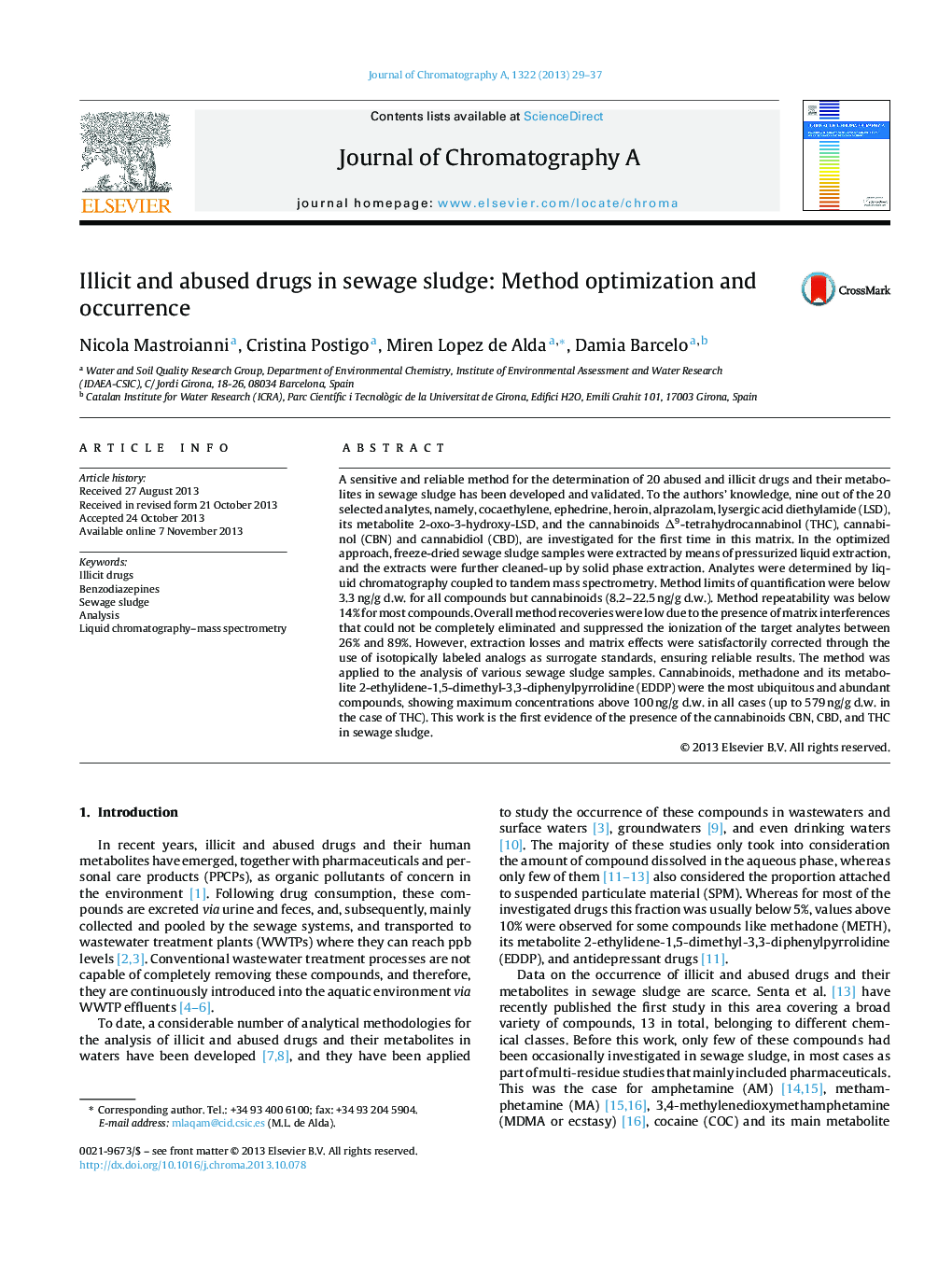| کد مقاله | کد نشریه | سال انتشار | مقاله انگلیسی | نسخه تمام متن |
|---|---|---|---|---|
| 1201047 | 1493604 | 2013 | 9 صفحه PDF | دانلود رایگان |

• A method for analysis of 20 abused and illicit drugs in sewage sludge was developed.
• Nine out of the 20 selected analytes are investigated for the first time in this matrix.
• The method is based on PLE, SPE and LC–MS/MS.
• Cannabinoids, methadone and EDDP were the most ubiquitous and abundant compounds.
• Δ9-Tetrahydrocannabinol, cannabinol and cannabidiol: first detection in sewage sludge.
A sensitive and reliable method for the determination of 20 abused and illicit drugs and their metabolites in sewage sludge has been developed and validated. To the authors’ knowledge, nine out of the 20 selected analytes, namely, cocaethylene, ephedrine, heroin, alprazolam, lysergic acid diethylamide (LSD), its metabolite 2-oxo-3-hydroxy-LSD, and the cannabinoids Δ9-tetrahydrocannabinol (THC), cannabinol (CBN) and cannabidiol (CBD), are investigated for the first time in this matrix. In the optimized approach, freeze-dried sewage sludge samples were extracted by means of pressurized liquid extraction, and the extracts were further cleaned-up by solid phase extraction. Analytes were determined by liquid chromatography coupled to tandem mass spectrometry. Method limits of quantification were below 3.3 ng/g d.w. for all compounds but cannabinoids (8.2–22.5 ng/g d.w.). Method repeatability was below 14% for most compounds. Overall method recoveries were low due to the presence of matrix interferences that could not be completely eliminated and suppressed the ionization of the target analytes between 26% and 89%. However, extraction losses and matrix effects were satisfactorily corrected through the use of isotopically labeled analogs as surrogate standards, ensuring reliable results. The method was applied to the analysis of various sewage sludge samples. Cannabinoids, methadone and its metabolite 2-ethylidene-1,5-dimethyl-3,3-diphenylpyrrolidine (EDDP) were the most ubiquitous and abundant compounds, showing maximum concentrations above 100 ng/g d.w. in all cases (up to 579 ng/g d.w. in the case of THC). This work is the first evidence of the presence of the cannabinoids CBN, CBD, and THC in sewage sludge.
Journal: Journal of Chromatography A - Volume 1322, 27 December 2013, Pages 29–37